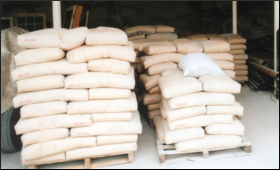|
|
|

|
Aggregating small cement businesses can push India's growth
|
|

|
|
| Top Stories |
 |
|
|
|
SME Times News Bureau | 30 Mar, 2019
The slowdown in real estate over the last few years and the constraints
that India's infrastructure sector have faced due to non-performing
assets (NPAs) have had a significant impact on allied industries, none
more than on the cement sector itself.
A quick look at the share
price returns for listed mini-cement stocks (smaller cement companies)
over the last one year gives a good idea about the woes of the sector,
with shares losing anywhere between 20 to 72 per cent of their market
capitalisation. However, despite the slowdown, for patient investors
wagering on the "India growth story" in the decades to come, the cement
sector is one that provides for interesting opportunities through a
platform structure.
"Scale" is critical to creating a successful
cement-focused platform company in India. Operational efficiencies
across the value chain and an aggregated distribution strategy will be
the two pillars that may help build a profitable and better-hedged
business.
A smaller cement business faces greater headwinds under
challenging market conditions. At a fundamental level, a smaller
company is far more exposed to the vagaries of both input price
fluctuations and selling price dynamics. Greater exposure to the
vagaries of price fluctuations is due to a lack of scale of operations,
lacking in geographical diversification, lower negotiating power with
sellers and buyers, lack of consistent brand building and lower capacity
to create the operational infrastructure to build an efficient supply
chain at a relatively low cost.
A large platform company will be
able to build a distribution network through both scale and better
negotiation capacity with suppliers and customers to create more robust
contracts. Access to energy inputs is vital for cement production, and
so is transportation to cater to a large user base. A platform with
scale and resources can better identify potential synergies across both
input costs and the sales process than relatively smaller firms.
Additionally, the use of robust back-end technology platforms will help
scale and operate effectively.
To emphasise on the importance of
input and logistics costs, one must look at the numbers for a
significant cement operator such as UltraTech. In Q3 of 2019, power and
fuel costs were approximately 23 per cent of the final sale price while
logistics costs were a little less than 25 per cent even for a
large-scale operator. The numbers drive home the fact as to how
significant a component of the total cement value chain are power input
prices and logistics cost. Utilising a platform company to aggregate,
reduce and manage these costs will be vital for success.
In a
capital-intensive business such as cement, focusing on Return on Capital
Employed (ROCE) is as critical, if not more, than in other industries. A
financially savvy operator can help boost ROCE through aggregating
smaller firms to focus on reducing costs, lowering input price and
logistics cost volatility and building a more recognisable brand.
Additionally,
it is also vital to take a disaggregated view of the business to boost
ROCE. The ability to view each asset in a portfolio regarding
profitability is crucial to the aim of maximising ROCE. At a
disaggregated portfolio level, assets that fail to recover their
variable costs will need urgent attention from the platform operator to
ensure that inefficient units aren't hidden within a large aggregated
business.
Essentially, in a commoditised business a larger
platform company will be able to generate greater cash flows during
periods of high demand and when the business cycle downturn occurs the
available cash and structural advantages of better contracts, and more
efficient supply chains, will help weather the storm.
The much
researched and discussed Mexican cement business Cemex provides a
template that can teach investors and operators alike. Improving
efficiencies, lowering costs, negotiating longer-term low volatility
contracts and creating a premium brand synonymous with quality even in a
commoditised business such as cement is the way forward.
True,
the cement business faces challenges given the commoditised product and
the sporadic instance of the loss of pricing power, but it is as much
true that the impending housing and infrastructure demand in India is
one that will create a significant opportunity. The ability of an
operator to aggregate smaller cement businesses in India into a robust
platform is a value proposition worth considering.
|
|
|
| |
|
|
|
|
|
|
|
|
|
|
|
|
|
|
| |
| Customs Exchange Rates |
| Currency |
Import |
Export |
US Dollar
|
₹91.25
|
₹89.55 |
UK Pound
|
₹122.85
|
₹118.85 |
Euro
|
₹107.95
|
₹104.3 |
| Japanese
Yen |
₹59 |
₹57.1 |
| As on 29 Dec, 2025 |
|
|
| Daily Poll |
 |
 |
| What is your biggest hurdle to scaling right now? |
|
|
|
|
|
| Commented Stories |
 |
|
|
|
|
|
| |
|